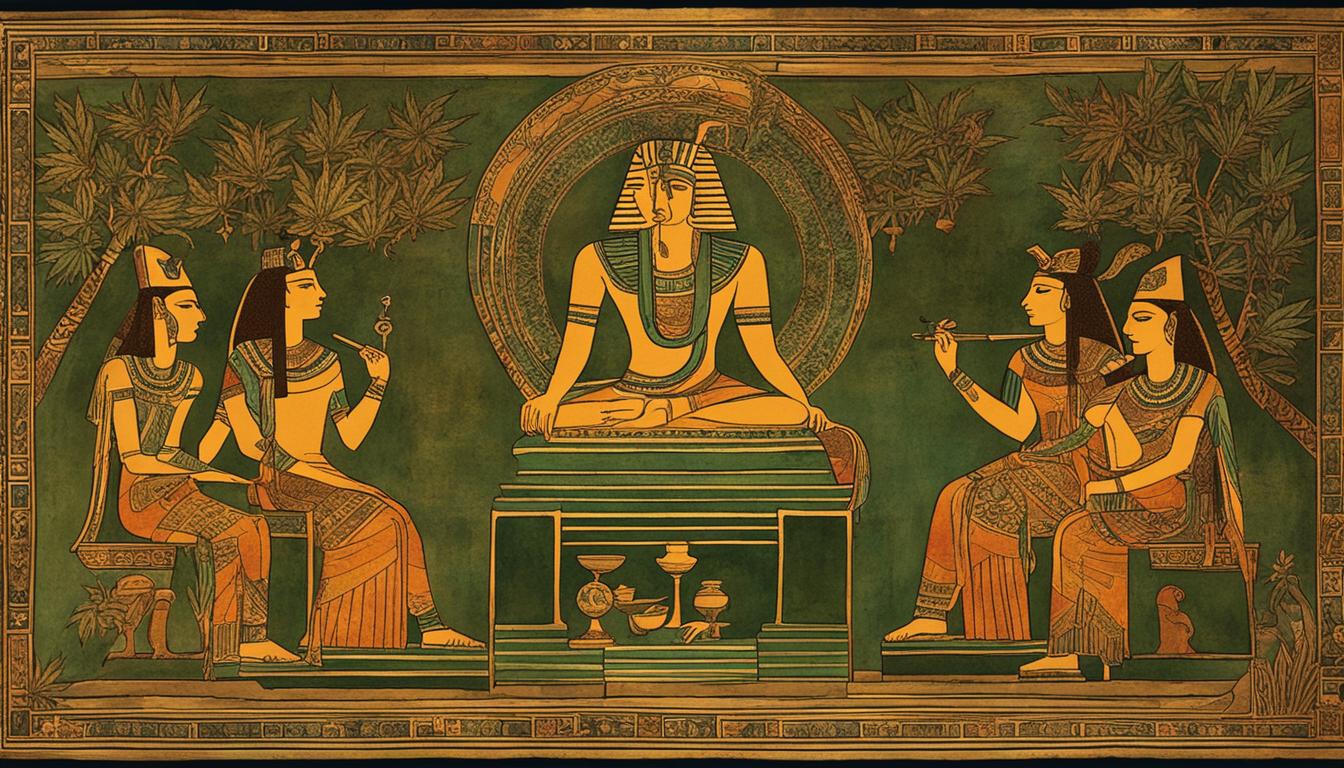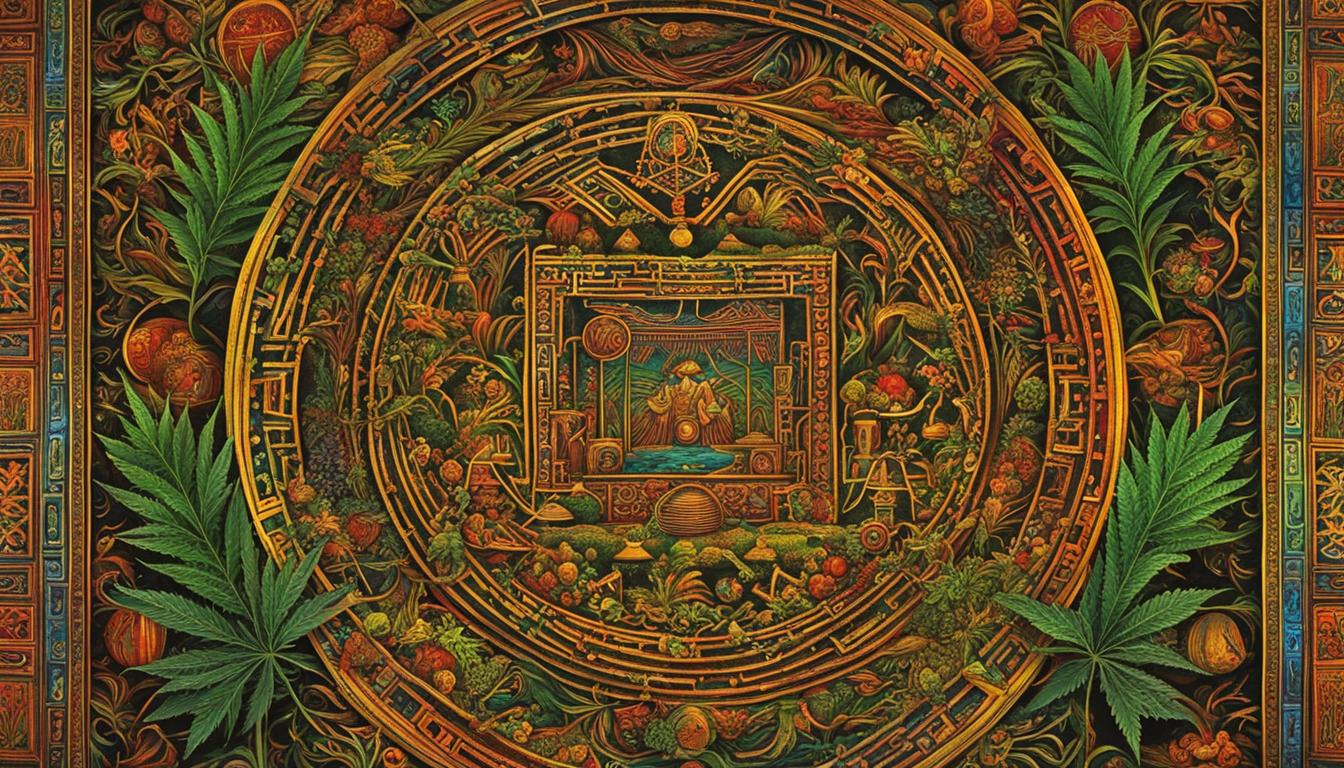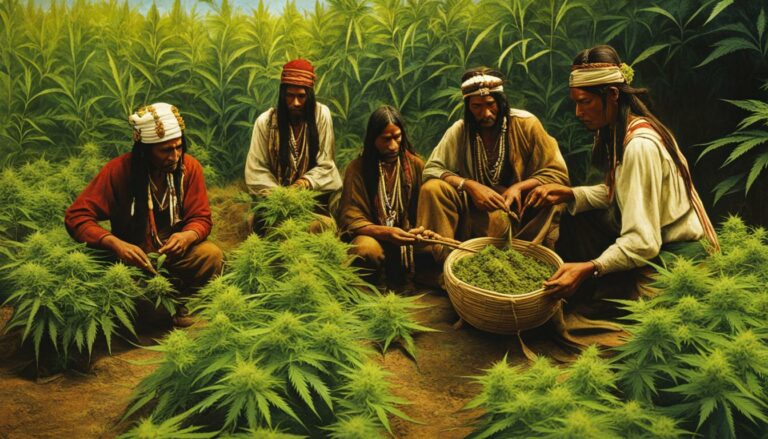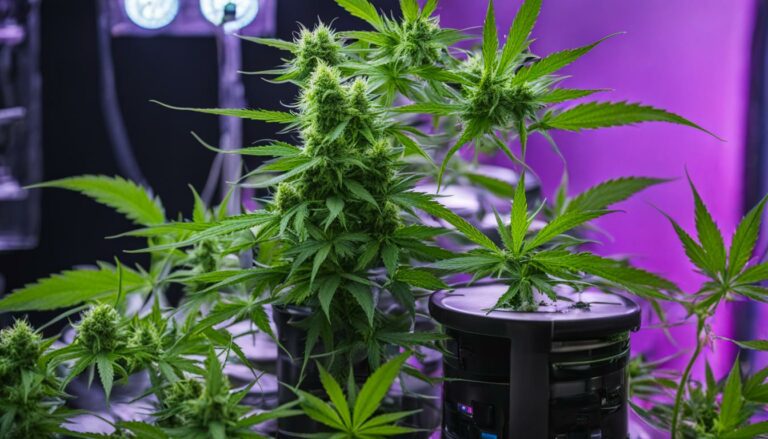Tracing Cannabis Through Ancient Civilizations
Cannabis, a plant with a rich history and a multitude of uses, has been an integral part of ancient civilizations for thousands of years. Its cultivation and consumption can be traced back to ancient cultures around the world, from China to India, Assyria to Africa. The fascinating history of cannabis in these ancient civilizations sheds light on its significance and cultivation practices.
Exploring the history of cannabis in ancient civilizations allows us to understand the deep-rooted relationship between humans and this remarkable plant. It played a vital role in the cultures and societies of these ancient civilizations, influencing everything from their daily lives to their religious practices and medicinal traditions.
In this article, we will delve into the intriguing history of cannabis in different ancient civilizations, uncovering its cultivation methods, its various uses, and its impact on society. Join us on this journey through time as we explore the significance of cannabis in ancient cultures and its enduring presence throughout human history.
Ancient China: The Significance of Cannabis in Ancient Cultures
Ancient China holds a rich history of cannabis use, with evidence of its significance in various aspects of their culture. Hemp, derived from cannabis, was highly valued for its versatile fibers, making it a vital resource for producing clothing, shoes, ropes, and even paper. The Chinese character for hemp depicts the image of two plants sheltering under a cover, symbolizing its importance to their society. Archaeological discoveries from the Neolithic Age reveal hemp fiber imprints on pottery, indicating the long history of cannabis cultivation in China.
Cannabis held a multitude of uses in ancient China, extending beyond practical applications. It played a crucial role in their medicinal practices, where it was used to treat ailments such as rheumatism and malaria. Additionally, cannabis was incorporated into religious rituals and ceremonies, believed to possess spiritual and divine properties. The Chinese cultivation and extensive utilization of cannabis reflect its deep-rooted cultural significance in ancient times.
“The Chinese character for hemp depicts the image of two plants sheltering under a cover, symbolizing its importance to their society.”
The Archaeological Evidence of Cannabis in Ancient Civilizations
Archaeological finds provide glimpses into the extent of cannabis usage in ancient China. The discovery of hemp fiber imprints on pottery showcases the long-standing cultivation and utilization of cannabis for its fibers. These findings not only illuminate its practical uses but also suggest its involvement in various aspects of ancient Chinese life, from clothing to household items. Such archaeological evidence highlights the deep-rooted relationship between cannabis and ancient Chinese civilizations.
Ancient China Table: The Significance of Cannabis in Ancient Cultures
| Aspect | Significance |
|---|---|
| Hemp fibers | Valued for clothing, shoes, ropes, and paper production |
| Medicinal uses | Treatment for rheumatism and malaria |
| Religious rituals | Incorporated into ceremonies for its spiritual properties |
The table above summarizes the significant aspects of cannabis in ancient Chinese culture. It highlights the versatile applications of hemp fibers, its medicinal use, and its role in religious practices. These illustrate the profound impact of cannabis on the ancient Chinese civilization.
Cannabis in Ancient India
In ancient India, cannabis held immense cultural and religious significance. Its use can be traced back thousands of years, with references found in ancient texts and artifacts. Cannabis, known as “ganja” or “bhang” in Sanskrit, was deeply ingrained in Indian society and played a significant role in various aspects of ancient Indian life.
Cultural and Religious Significance
Ancient Hindu texts attribute the use of cannabis to the Hindu God Shiva. Shiva is often depicted as an ascetic who consumed cannabis to attain spiritual enlightenment. As a result, cannabis became an integral part of religious rituals and practices in ancient India.
Cannabis was also valued for its medicinal properties in ancient India. It was used to treat a variety of health problems, including pain, inflammation, and digestive issues. Additionally, cannabis was believed to possess mood-enhancing properties, and it was used to alleviate symptoms of depression and anxiety.
Medicinal Uses of Cannabis
Ancient Indian physicians recognized the therapeutic potential of cannabis. They prescribed it for various ailments, including arthritis, epilepsy, and respiratory conditions. Cannabis was often prepared in different forms, such as edible concoctions, oils, and ointments, to cater to the specific needs of patients.
In Ayurveda, the traditional system of medicine in India, cannabis was considered a valuable herb and was classified as a “sattvic” plant, meaning it promotes tranquility and mental clarity. Ayurvedic practitioners believed that cannabis could restore balance to the body and mind, leading to overall well-being.
The Cultural Legacy of Ancient Indian Cannabis Use
The cultural and religious significance of cannabis in ancient India has left a lasting legacy. Even today, cannabis continues to play a role in religious rituals and festivals in certain regions of India. The annual festival of Holi, for example, involves the consumption of bhang, a preparation made from cannabis, as part of the festive celebrations.
The medicinal use of cannabis has also persisted in traditional Indian medicine. Ayurvedic practitioners still utilize cannabis-based preparations in their treatments, preserving the ancient wisdom and knowledge surrounding the plant.
Table: Medicinal Uses of Cannabis in Ancient India
| Ailment | Medicinal Use |
|---|---|
| Pain and Inflammation | Cannabis was used to alleviate pain and reduce inflammation. |
| Digestive Issues | Cannabis was prescribed to relieve digestive problems and stimulate appetite. |
| Depression and Anxiety | Cannabis was believed to possess mood-enhancing properties and was used to alleviate symptoms of depression and anxiety. |
| Respiratory Conditions | Cannabis was used to treat respiratory ailments such as coughs and bronchitis. |
| Arthritis | Cannabis was employed to relieve pain and stiffness associated with arthritis. |
Cannabis in Ancient Japan and Korea
In addition to China and India, the cultivation and use of cannabis were also prevalent in ancient Japan and Korea. These ancient civilizations recognized the value of cannabis for its practical applications and possibly its psychoactive properties.
In Japan, hemp cultivation dates back to the pre-Neolithic period, where it was used for fibers and as a food source. Hemp fibers were vital for making clothes, ropes, and even as a material for paper production. The versatility of hemp made it a valuable resource in ancient Japanese society.
Korea also had a long history of cannabis cultivation. Samples of hempen fabric that date back to 3000 BC have been discovered, indicating the extensive use of cannabis in ancient Korean society. The cultivation of cannabis in Korea was likely due to its practical applications, such as the production of textiles and ropes.
“The ancient civilizations of Japan and Korea recognized the value of cannabis, utilizing it for various purposes. From fibers to food, cannabis played an essential role in their societies.”
While the exact details of cannabis use in ancient Japan and Korea are not as well-documented as in China and India, the presence of cannabis artifacts and historical records suggests that it was a significant part of their cultures. These ancient civilizations were aware of the benefits and possibilities that cannabis offered, further emphasizing the widespread cultivation and utilization of this versatile plant.
The Use of Cannabis in Ancient Japan and Korea
| Aspect | Japan | Korea |
|---|---|---|
| Time Period | Pre-Neolithic period onwards | 3000 BC onwards |
| Main Uses | Textiles, ropes, food | Textiles, ropes |
| Significance | Valued for its versatility | Widespread cultivation |
Ancient Assyria and Scythia: Cannabis in the Ancient World
Ancient Assyria and Scythia were civilizations that were familiar with cannabis and its uses, incorporating it into their daily lives and cultural practices. While both civilizations utilized cannabis, their purposes and methods differed.
Ancient Assyria
In ancient Assyria, cannabis appears to have been used primarily for its aromatic properties. The Assyrians recognized the pleasant scent of cannabis and potentially used it in perfumes and other fragrant preparations. They valued the aroma of cannabis and its ability to add a pleasing scent to their surroundings.
“The aromatic qualities of cannabis were highly valued in ancient Assyria, with the plant used to create fragrances and perfumes that enhanced the sensory experience of those who encountered them.”
Ancient Scythia
The ancient Scythians had a different approach to cannabis, using it to induce trance-like states. They would burn cannabis flowers and inhale the smoke as a method of entering altered states of consciousness. Classical Greek historian Herodotus documented this practice, noting the recreational and ritualistic nature of cannabis use among the Scythians.
The Scythians burned cannabis flowers to produce smoke, inhaling it to achieve altered states of consciousness, which were believed to bring them closer to the divine.
The use of cannabis in ancient Assyria and Scythia demonstrates the versatility and significance of this plant in the ancient world. Whether for its aromatic properties or its ability to induce trance-like states, cannabis played a unique role in these civilizations’ cultures and practices.

Ancient Egypt and Africa: The Impact of Cannabis on Their Societies
Ancient Egypt and Africa were not immune to the influence of cannabis in their societies. The use of cannabis can be traced back to ancient times, with fascinating discoveries shedding light on its significance in these civilizations. From religious rituals to medicinal practices, cannabis played a role in shaping the cultures and traditions of these ancient societies.
The Role of Cannabis in Ancient Egypt
Ancient Egyptians held cannabis in high regard, particularly for its medicinal properties. The consumption of cannabis, in the form of hashish, was documented as early as the thirteenth century. Sufis, Islamic mystics, consumed hashish as part of their spiritual practices, believing it brought them closer to a state of enlightenment. Additionally, cannabis was used for its therapeutic effects, and its use is mentioned in medical texts like the Ebers Papyrus, which dates back to 1550 BC.
Cannabis Use in Ancient Africa
Ancient Africa was also intertwined with the use of cannabis. Evidence of cannabis consumption has been found in ancient smoking pipes, showcasing its presence among indigenous peoples before European settlement. Traders from the east coast of Africa played a crucial role in spreading cannabis throughout the continent, reaching as far as the Congo Basin. The utilization of cannabis in Africa was likely multifaceted, encompassing traditional medicine, spiritual practices, and cultural customs.
Ancient Civilizations and the Impact of Cannabis
The presence of cannabis in ancient Egypt and Africa illustrates the profound impact it had on their societies. Whether as a tool for spiritual enlightenment or a source of therapeutic relief, cannabis was deeply ingrained in the cultures of these ancient civilizations. The use of cannabis not only provided practical benefits but also held symbolic and cultural significance, shaping the beliefs and practices of the people who embraced it.
| Ancient Egypt | Ancient Africa |
|---|---|
| Hashish consumption documented as early as the thirteenth century | Evidence of cannabis use found in ancient smoking pipes |
| Cannabis used in religious rituals by Sufis | Traders from the east coast facilitated the spread of cannabis |
| Cannabis mentioned in medical texts like the Ebers Papyrus | Cannabis likely used for traditional medicine and cultural practices |
“The use of cannabis in ancient Egypt and Africa reveals the deep-rooted influence it had on their societies, spanning both religious and medicinal domains.”
Cannabis in Ancient Europe – The Influence of the British Empire
The use of cannabis in ancient civilizations extended beyond Asia and Africa, reaching the shores of ancient Europe. One of the key players in spreading cannabis cultivation and use was the British Empire, which had a significant influence on various parts of the world during its colonial era. From introducing hemp cultivation to promoting its practical applications, the British Empire played a crucial role in the global history of cannabis.
King Henry VIII of England recognized the value of hemp and encouraged its cultivation for the English navy in the early sixteenth century. The empire’s need for hemp fibers for shipbuilding and other industries fueled the expansion of hemp cultivation in British-controlled territories. This expansion had a lasting impact on regions such as India, where the British introduced large-scale hemp plantations and established systematic cultivation methods.
The British Empire’s encounters with cannabis-consuming regions also contributed to the spread of cannabis to new areas. European colonial powers, including the British, came into contact with ancient civilizations that had long-standing traditions of cannabis use. This contact led to the exchange of knowledge and practices related to cannabis cultivation and consumption. As a result, cannabis spread to new regions and became integrated into the cultures of these areas.
The influence of the British Empire on cannabis history cannot be underestimated. The empire’s reach extended to numerous countries and continents, allowing for the dissemination of cannabis knowledge and practices across vast distances. Through trade, exploration, and colonization, the British Empire played a crucial role in shaping the global spread of cannabis.
| Ancient Civilizations Cannabis | Impact of the British Empire |
|---|---|
| Ancient China | Introduced systematic cultivation and spread knowledge of hemp fibers |
| Ancient India | Established large-scale hemp plantations and promoted cultivation methods |
| Ancient Assyria and Scythia | Contributed to the exchange of cannabis-related knowledge and practices |
| Ancient Egypt and Africa | Facilitated the spread of cannabis to new regions through trade and colonization |
In summary, the British Empire played a significant role in the history of cannabis, particularly in ancient Europe and its colonies. From promoting hemp cultivation to facilitating the exchange of cannabis knowledge, the empire’s influence shaped the use and spread of cannabis in various ancient civilizations. Understanding the impact of the British Empire on cannabis history provides valuable insights into the global journey of this ancient plant.
Medicinal Uses of Cannabis in Ancient Civilizations
Ancient civilizations recognized the healing properties of cannabis and incorporated it into their medical practices. From China to India and ancient Egypt, cannabis was revered for its ability to alleviate a wide range of health problems.
In China, the medicinal use of cannabis can be traced back thousands of years. The ancient Chinese valued cannabis for its therapeutic properties, using it to treat conditions such as rheumatism, constipation, and malaria. Cannabis was also used as an anesthetic during surgeries and childbirth.
“Cannabis has been used in Chinese medicine for thousands of years to treat a variety of ailments. Its healing properties were highly regarded, and it was considered an essential herb in traditional medicine.” – Ancient Chinese Medical Text
In ancient India, cannabis was an integral part of the Ayurvedic system of medicine. Known as “ganja,” cannabis was believed to have a variety of medicinal benefits, including pain relief, appetite stimulation, and the treatment of digestive and respiratory disorders. It was also used as a tonic to promote overall wellness and balance in the body.
Similarly, ancient Egyptian civilization valued cannabis for its medicinal properties. Cannabis was used to treat ailments such as inflammation, pain, and eye problems. It was also used as a sedative and relaxant, promoting restful sleep and reducing anxiety.
| Ancient Civilizations | Medicinal Uses of Cannabis |
|---|---|
| Ancient China | Treatment of rheumatism, constipation, malaria, and as an anesthetic |
| Ancient India | Pain relief, appetite stimulation, treatment of digestive and respiratory disorders, overall wellness |
| Ancient Egypt | Treatment of inflammation, pain, eye problems, sedative and relaxant |
The medicinal uses of cannabis in ancient civilizations highlight the long-standing recognition of its therapeutic properties. Ancient healers understood and valued the potential benefits of cannabis in promoting well-being and treating various health conditions.
Ancient Civilizations Cannabis: The Global Spread of a Versatile Plant
As cannabis gained popularity and recognition in ancient civilizations, it began to spread across the globe, reaching new cultures and societies. The global spread of cannabis was facilitated by various means, including trade, exploration, and the movement of people. Traders from the Persian world and the Arab world played a crucial role in introducing cannabis to different regions, paving the way for its integration into diverse civilizations.
For instance, as traders ventured into Africa, cannabis made its way to indigenous peoples before European settlement. Ancient smoking pipes with traces of cannabis have been discovered, indicating its use among African communities centuries ago. The trade routes along the east coast of Africa also contributed to the spread of cannabis to the Congo Basin and other areas of the continent.
In the Americas, the global spread of cannabis occurred as a result of exploration and colonization. European powers, including the British Empire, encountered cannabis-consuming regions during their expeditions. Through colonization, cannabis was introduced to new territories and became part of the cultural fabric of these regions. The influence of the British Empire, in particular, played a significant role in the dissemination of cannabis to different parts of the world.
Table: The Spread of Cannabis in Ancient Civilizations
| Ancient Civilization | Means of Spread | Impact and Integration |
|---|---|---|
| Africa | Trade routes, indigenous use | Cannabis reached indigenous peoples before European settlement; incorporated into cultural practices |
| Americas | Exploration, colonization | European powers introduced cannabis to new territories; became part of local cultures |
| Persian and Arab world | Trade | Traders from these regions introduced cannabis to various civilizations |
The spread of cannabis in ancient civilizations demonstrates its enduring presence and significance throughout human history. The versatile plant traversed continents, engaging with different cultures and societies along its journey. From Africa to the Americas, from Asia to Europe, cannabis influenced and shaped the traditions, customs, and practices of ancient civilizations, leaving an indelible imprint on our collective past.

The Rise of Cannabis Restrictions
In the fascinating history of cannabis, its journey through ancient civilizations was not without obstacles. As societies encountered this versatile plant, restrictions began to emerge, shaping the narrative around its use. Understanding the rise of cannabis restrictions provides valuable insights into the cultural and societal dynamics of ancient civilizations.
The Early Beginnings: Islamic Regions
“In the 14th century, Islamic regions implemented some of the earliest restrictions on cannabis.”
Islamic countries became pioneers in imposing regulations on the use of cannabis. With a growing influence in their territories, these regions recognized the potential effects of cannabis consumption and initiated measures to control its use. These early restrictions set the stage for future policies and shaped the perspectives surrounding cannabis.
Colonial Influence: Racial and Class Tensions
“In the 19th century, colonial countries began imposing restrictions on cannabis, often driven by racial and class tensions.”
During the era of colonial expansion, cannabis restrictions gained momentum. European colonial powers, including the British Empire, encountered regions where cannabis consumption was prevalent. Influenced by racial and class tensions, colonial authorities associated cannabis with lower social classes and racial stereotypes, leading to the adoption of restrictive policies.
The Global Impact: Coordinated International Efforts
“By the middle of the 20th century, coordinated international efforts led to sweeping restrictions on cannabis globally.”
In the mid-20th century, international efforts aimed at controlling drugs gained momentum, leading to widespread restrictions on cannabis. The United Nations and its agencies played a significant role in creating a global framework for drug control, which included cannabis. This coordination resulted in a comprehensive international approach to regulating cannabis, shaping the legal landscape we see today.
| Key Points | Ancient Civilizations Cannabis | Ancient civilizations and cannabis restrictions |
|---|---|---|
| Introduction | Cannabis played a significant role in ancient civilizations | Restrictions on cannabis emerged as societies encountered it |
| Islamic Regions | Implemented early restrictions on cannabis | Pioneered regulations to control its use |
| Colonial Influence | Colonial countries imposed restrictions on cannabis | Driven by racial and class tensions |
| The Global Impact | Coordinated international efforts led to sweeping restrictions on cannabis | Comprehensive approach to regulating cannabis globally |
Despite the global trajectory of cannabis restrictions, there are recent movements towards decriminalization and legalization in some countries. As societies continue to reassess their approach to cannabis, ancient civilizations serve as a reminder of the enduring presence and importance of this remarkable plant throughout human history.
Conclusion
The history of cannabis in ancient civilizations reveals the immense significance of this plant in shaping cultures and societies. From ancient China to Assyria, from Egypt to Europe, cannabis played a pivotal role in various aspects of life. Its cultivation, consumption, and medicinal use were deeply ingrained in the fabric of these ancient civilizations.
Ancient civilizations recognized the multifaceted nature of cannabis, valuing it for its practical, medicinal, and even spiritual properties. From its use in producing textiles and paper to its incorporation in religious rituals and as a medicine for treating ailments, cannabis held a special place in the hearts and minds of our ancestors.
The enduring presence of cannabis throughout ancient civilizations is a testament to its lasting significance. As we reflect on the history of cannabis use in ancient cultures, we gain a deeper appreciation for the role it played in shaping humanity’s journey. From the ancient Chinese character symbolizing hemp’s importance to the rise and spread of cannabis across different continents, its impact cannot be denied.
Today, as we navigate the complex landscape of cannabis legalization and regulation, it is important to acknowledge the rich history and cultural significance of this plant. The ancient civilizations’ embrace of cannabis serves as a reminder of its potential to bring healing, inspiration, and unity to our modern world.
FAQ
What is the history of cannabis use in ancient civilizations?
The use of cannabis stretches back thousands of years in human history, with evidence of its cultivation and consumption found in ancient civilizations.
How did ancient civilizations in China utilize cannabis?
Ancient Chinese culture valued hemp for its fibers and used it to make clothing, shoes, ropes, and paper. Cannabis had a wide range of uses in ancient China, from practical applications like textiles to medicinal and religious purposes.
What role did cannabis play in ancient India?
Cannabis had significant cultural and religious importance in ancient India. It was used in food and drink, attributed to Hindu God Shiva, and valued for its medicinal properties.
Did ancient civilizations in Japan and Korea use cannabis?
Yes, both ancient Japan and Korea cultivated and used cannabis. It was used for fibers, as a food source, and possibly for its psychoactive properties.
How did ancient Assyrians and Scythians use cannabis?
The Assyrians potentially used cannabis as an aromatic, while the Scythians burned cannabis flowers to induce trance-like states.
Was cannabis consumed and used in ancient Egypt and Africa?
Yes, hashish consumption by Sufis has been documented in Egypt, and ancient smoking pipes with traces of cannabis have been found in Africa.
How did cannabis spread to Europe?
Cannabis cultivation was encouraged by King Henry VIII of England, and European colonial powers, including the British, introduced cannabis to new areas.
What were the medicinal uses of cannabis in ancient civilizations?
Cannabis was used to treat arthritis, depression, inflammation, and pain in ancient civilizations.
How did cannabis spread across the globe?
Traders, explorers, and the movement of people played a role in the global spread of cannabis.
When did restrictions on cannabis begin to emerge?
Islamic regions implemented restrictions in the 14th century, and colonial countries started imposing restrictions in the 19th century.
What is the significance of cannabis in ancient civilizations?
Cannabis played significant roles in society, medicine, and religion in ancient civilizations, highlighting its enduring presence and importance throughout human history.














